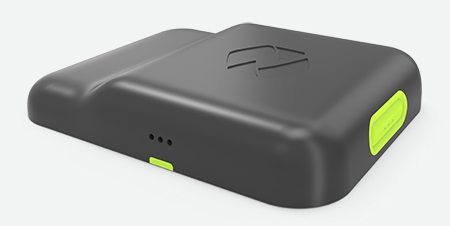Rapid Overmolding Used to Develop Wearable Safety Device

The Spot-r wearable device helps improves safety on construction job sites by accelerating response times to accidents. Proto Labs’ automated design for manufacturability analysis helped Spot-r’s designers reduce development costs by identifying manufacturability issues before production began. Image courtesy of Proto Labs Inc.
Latest News
November 16, 2017

Let’s see a show of hands. How many of you trained in one discipline and are doing something else that you had limited exposure to? The reason you’re good at your job, besides reading DE, is that you’re smart enough to adapt and you have access to the right tools and right collaborators. That’s the line underlining today’s Check it Out read.
See, this guy, we’ll call him Greg because that’s his name, has extensive sheet metal training. He’s the lone mechanical engineer at Triax Technologies, a 20-person safety and communications technology outfit. Most of Triax’s development efforts are software-intense. They were developing an IoT (internet of things) wearable device intended to improve safety at construction sites. It’s in a molded plastic housing.
 The Spot-r wearable device helps improves safety on construction job sites by accelerating response times to accidents. Proto Labs’ automated design for manufacturability analysis helped Spot-r’s designers reduce development costs by identifying manufacturability issues before production began. Triax Technologies image courtesy of Proto Labs Inc.
The Spot-r wearable device helps improves safety on construction job sites by accelerating response times to accidents. Proto Labs’ automated design for manufacturability analysis helped Spot-r’s designers reduce development costs by identifying manufacturability issues before production began. Triax Technologies image courtesy of Proto Labs Inc.In “Technology Firm Develops Wearable Device with Rapid Overmolding,” you’ll read how Greg worked with an applications engineer at Proto Labs and with free DFM (design for manufacturability) feedback from Proto Labs’ online quoting system to optimize the case design for service access, assembly and seal. This is great stuff.
Spot-r, the safety device, measures on-site slips and falls in real time, which can help speed response to construction site accidents. With it, safety managers can identify potential hazards, locate workers and generally improve overall worksite safety. Spot-r slips onto a pants belt like a cellphone holder. It’s crammed with sensing and wireless mesh communication technologies.
So, Greg had Proto Labs make Triax’s first prototype molded parts, but soon realized the design and seal required more work. Spot-r had to be waterproof, which meant it needed a gasket between the two parts of the housing. This got Greg working with Proto Labs’ overmolding capabilities.
Now, remember Greg’s background is sheet metal. Overmolding is an injection-molding process commonly used for damping vibrations, improving handle grips and creating waterproof seals. This design requirement got Greg working with Proto Labs’ free automated DFM feedback capabilities and one of its applications engineers.
Both were key to the project’s success. They enabled Greg and his Triax colleagues to optimize the housing for watertightness, assembly and serviceability before moving into low-volume pilots and production. This also reduced development time and costs. All the work revolved around CAD models and the quoting system’s DFM component.
“Technology Firm Develops Wearable Device with Rapid Overmolding” is a fine example of smart people and tools working collaboratively. Hit today’s Check it Out link to read more.
Thanks, Pal. – Lockwood
Anthony J. Lockwood
Editor at Large, DE
Subscribe to our FREE magazine, FREE email newsletters or both!
Latest News
About the Author
Anthony J. Lockwood is Digital Engineering’s founding editor. He is now retired. Contact him via [email protected].
Follow DE






